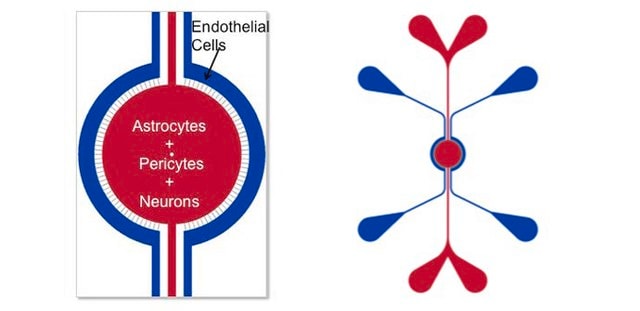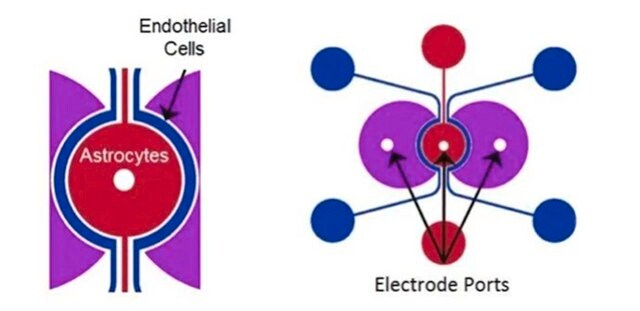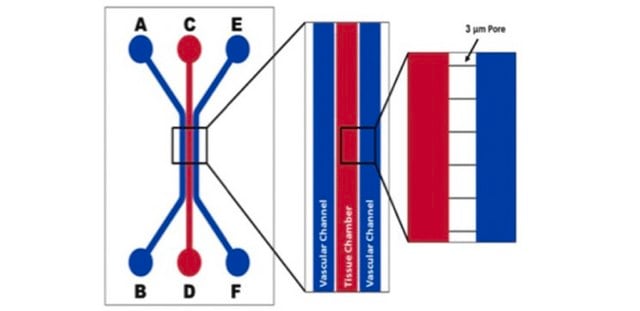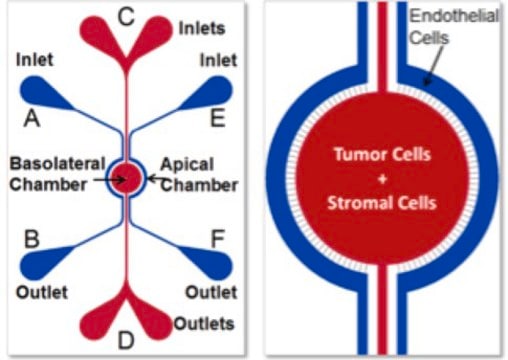VIV402003
SynVivo SynBBB 3D blood brain barrier model chip assay kit, Transepithelial/endothelial Electrical Resistance (TEER) configuration
Sign Into View Organizational & Contract Pricing
All Photos(1)
About This Item
UNSPSC Code:
60104506
NACRES:
NA.84
Recommended Products
packaging
case of 1 ea
manufacturer/tradename
SynVivo 402003
storage temp.
room temp
Related Categories
General description
10 - IMN2 SynBBB-TEER 3 μm slit barrier chips, 100 ft Tygon Tubing, 25 pack Slide Clamps, 50 pack 1 mL Syringe with Luer-Lok Tip, 50 pack 24 Gauge Needle x 0.5 in long,
SynVivo′s SynBBB 3D blood brain barrier model recreates the in vivo microenvironment by emulating a histological slice of brain tissue cells in communication with endothelial cells across the blood brain barrier (BBB). Shear-induced endothelial cell tight junctions, which cannot be achieved in the Transwell model, are easily achieved in the SynBBB model using physiological fluid flow. Formation of tight changes can be measured using biochemical or electrical analysis (assessing changes in electrical resistance) with the SynVivo Cell Impedance Analyzer. Interactions between brain tissue cells and endothelial cells are readily visualized in the SynBBB assay. Transwell models do not allow real-time visualization of these cellular interactions, which are critical for understanding of the BBB microenvironment.
SynBBB is the only in vitro BBB model that allows:
The SynBBB system is a highly versatile platform for investigation of:
SynVivo′s SynBBB 3D blood brain barrier model recreates the in vivo microenvironment by emulating a histological slice of brain tissue cells in communication with endothelial cells across the blood brain barrier (BBB). Shear-induced endothelial cell tight junctions, which cannot be achieved in the Transwell model, are easily achieved in the SynBBB model using physiological fluid flow. Formation of tight changes can be measured using biochemical or electrical analysis (assessing changes in electrical resistance) with the SynVivo Cell Impedance Analyzer. Interactions between brain tissue cells and endothelial cells are readily visualized in the SynBBB assay. Transwell models do not allow real-time visualization of these cellular interactions, which are critical for understanding of the BBB microenvironment.
SynBBB is the only in vitro BBB model that allows:
- Accurate in vivo hemodynamic shear stress
- Real-time visualization of cellular and barrier functionality
- Significant reduction in cost and time
- Robust and easy to use protocols
The SynBBB system is a highly versatile platform for investigation of:
- Tight junction proteins: Determine the levels of tight junction proteins namely zonula occludens, claudins and occludins which regulate the BBB.
- Transporter proteins: Analyze functionality of transporter proteins (e.g. Pgp) in normal and dysfunctional BBB.
- Drug permeability: Evaluate real-time permeability of therapeutics and small molecules across the endothelium of the BBB.
- Inflammation: Understand the underlying mechanisms of inflammatory responses on the regulation of the BBB.
- Cell migration: Visualize and quantify in real-time migration of immune cells across the BBB.
- Omic changes: Perform genomic, proteomic and metabolic analysis on normal and dysfunctional BBB.
- Neurotoxicity: Analyze toxicity effects of chemical, biological and physical agents on the cells of the BBB.
- Neuro-oncology: Investigate effects of the tumor cells on the BBB.
Linkage
LInk to Publications
application text
application text
Certificates of Analysis (COA)
Search for Certificates of Analysis (COA) by entering the products Lot/Batch Number. Lot and Batch Numbers can be found on a product’s label following the words ‘Lot’ or ‘Batch’.
Already Own This Product?
Find documentation for the products that you have recently purchased in the Document Library.
Giulia Grisanti et al.
Micromachines, 12(6) (2021-07-03)
An endothelial-lined blood vessel model is obtained in a PDMS (Polydimethylsiloxane) microfluidic system, where vascular endothelial cells are grown under physiological shear stress, allowing -like maturation. This experimental model is employed for enhanced drug delivery studies, aimed at characterising the
Our team of scientists has experience in all areas of research including Life Science, Material Science, Chemical Synthesis, Chromatography, Analytical and many others.
Contact Technical Service






